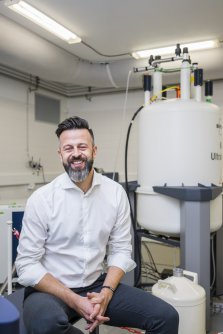Just around one percent of human genome contains so-called “protein-coding genes” on the basis of which the cell is able to produce proteins. They represent the basic building stones of the organism and they have also a number of various functions necessary for life. To be able to produce the needed protein in the right time, the cell must find the right gene in DNA and transcribe it.
Richard Štefl, the Group Leader, explains the complicate transcription of DNA: “The responsibility lies on the complex of molecules called RNA polymerase, which, however, is not itself capable of recognising the right beginning and end of the gene which is presently needed. The thing is that the genetic information contains a number of incorrect beginnings and endings that do not mark particular genes, but have different functions.” Therefore, to be able to recognise the right gene, the RNA polymerase needs help of another so-called regulatory molecules. It was their structure which has been described by the scientists of CEITEC MU.
The scientists were able to solve the structure of the regulatory complex thanks to the infrastructure provided by CEITEC MU where the labs are equipped with all elementary methods of structural biology, namely crystallography, cryo-electron microscopy and nuclear magnetic resonance. Thanks to their combination, the scientists were able to solve the structure of molecules regulating the search for the end of the genes. In the future, they would like to focus on the mechanisms which are used by cells to find the right beginning of the gene which it needs to be transcribed into functioning molecules.
Click on the image to start the video:









